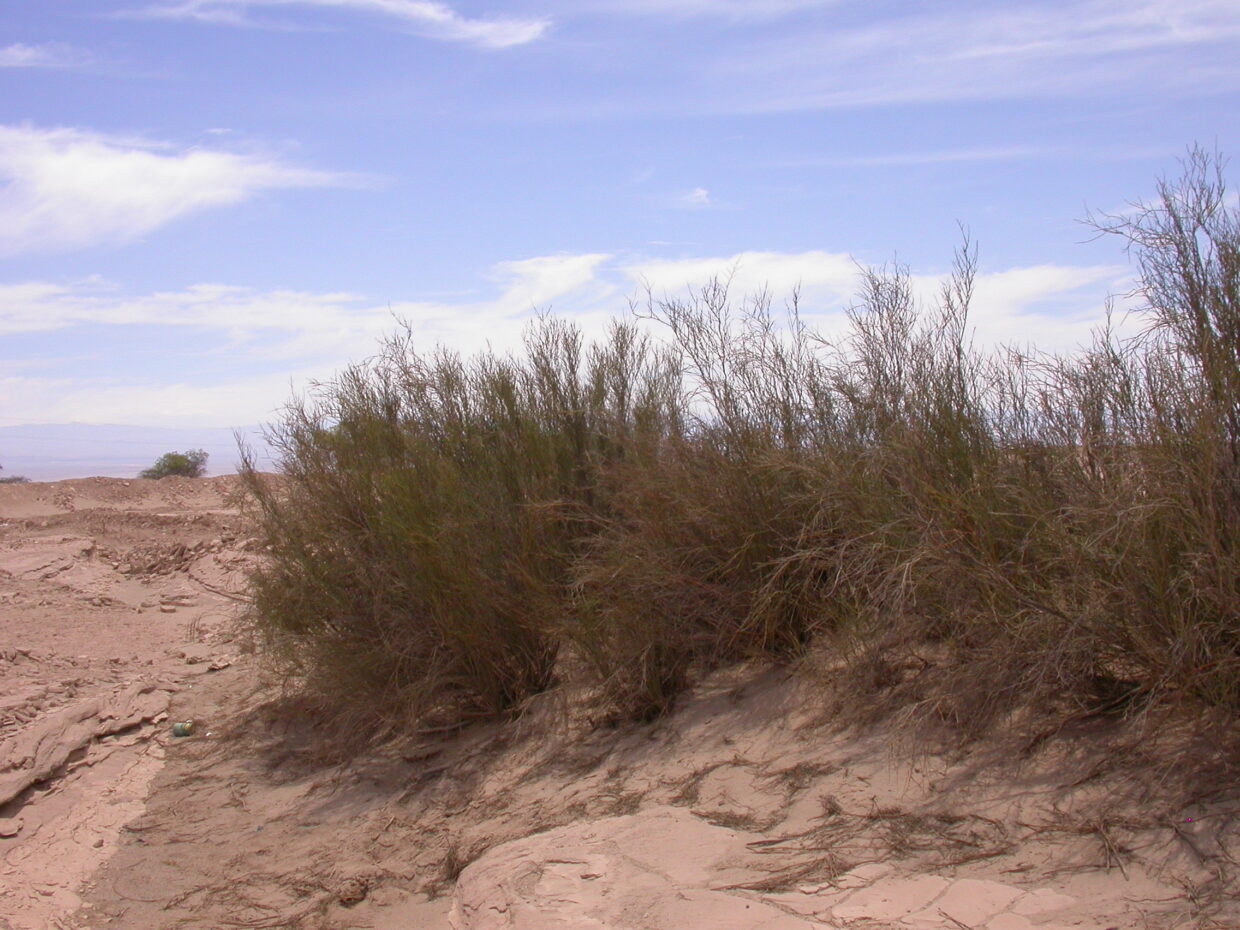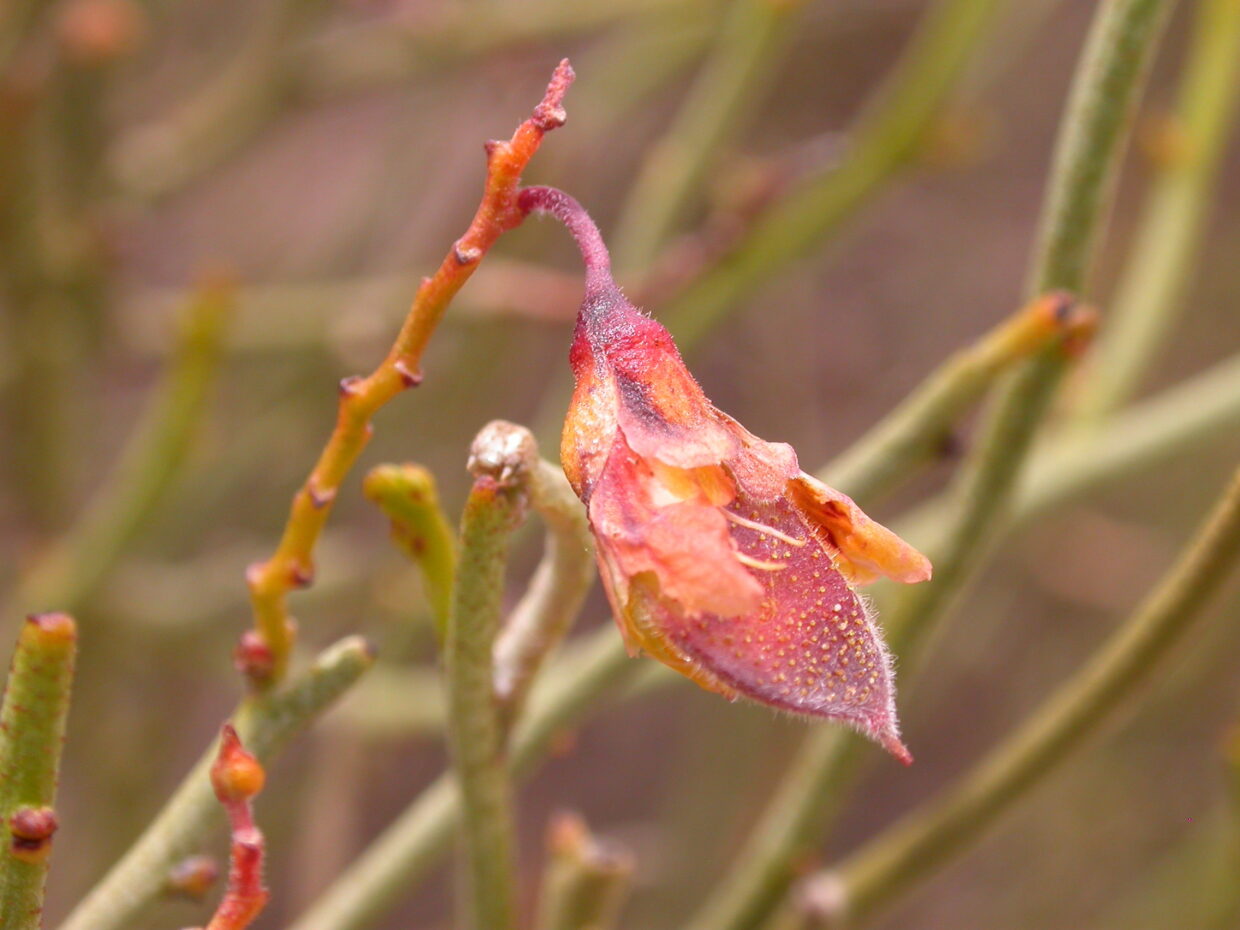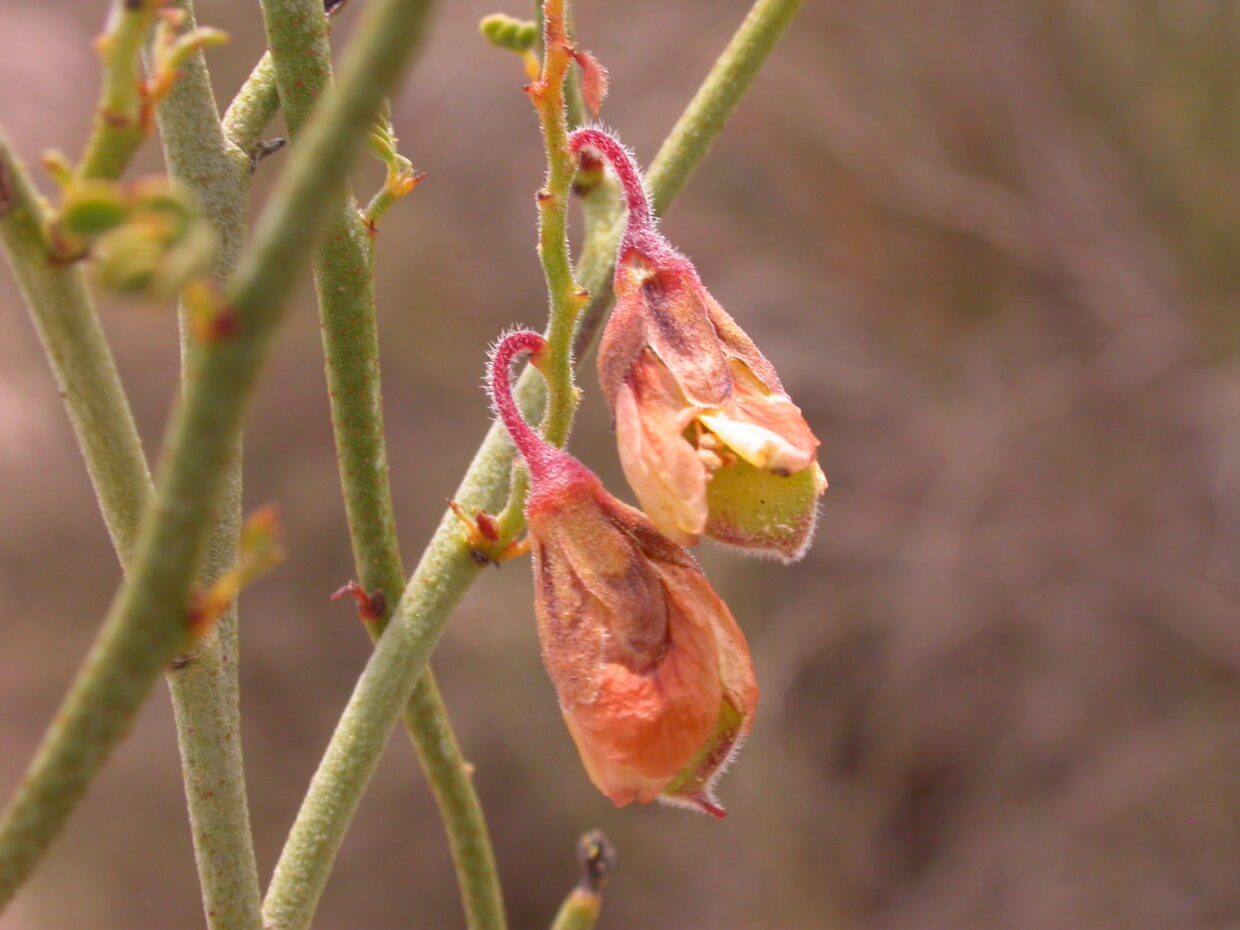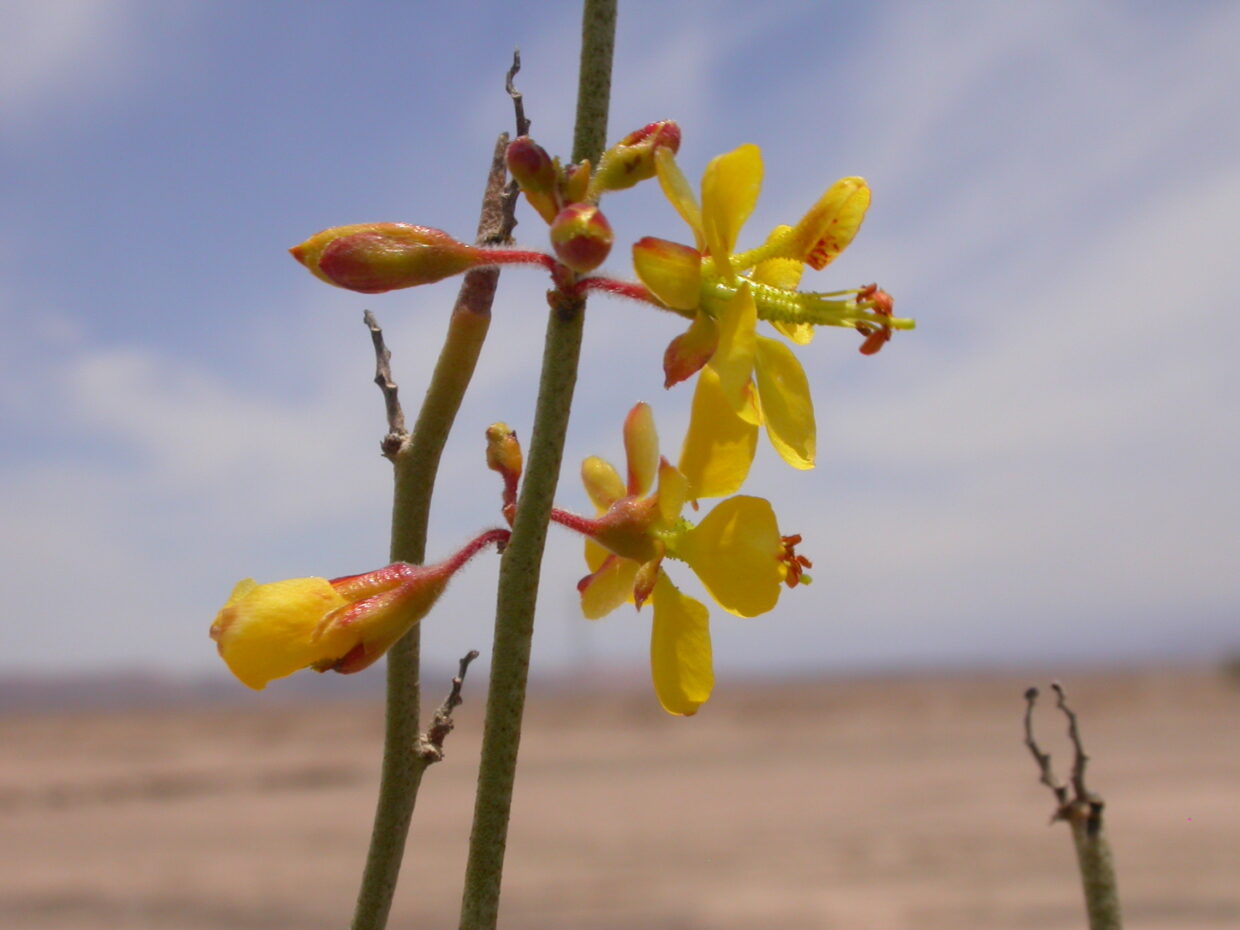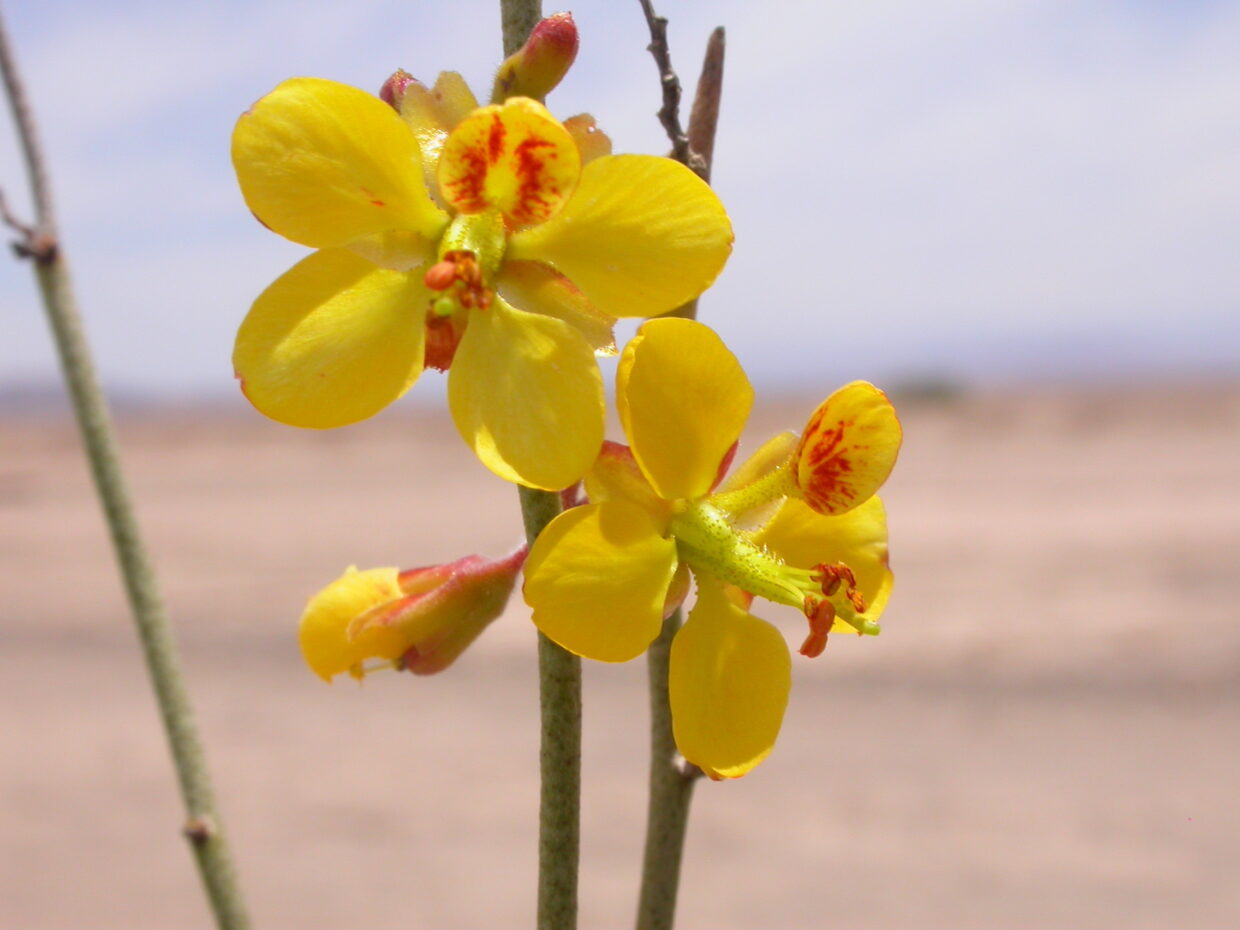Place of Publication
Kew Bull. 65(2): 221 (2010)
Type citation
Based on: Caesalpinia aphylla Phil., "Frequens in Valle Tamarugal, dicto provinciae Tarapacá; Quebrada de Tibivilche". Philippi s.n. (Syntypes: SGO 49968 SI; probable isosyntype (photo F 1771 (fl).)
Synonyms
Common names
- retamo (Ulibarri (1996)) (Riedemann et al. (2006))
- retama (Ulibarri (1996)) (Riedemann et al. (2006))
References
-
Philippi R.A. (1891)
Philippi, R.A. 1891. Catalogus Praevius Plantarum in Itinere ad Tarapaca a Friderico Philippi Lectarum. Anales del Museo Nacional de Chile, Santiago de Chile, II: 1–94.
-
Ulibarri (1996)
Ulibarri, E.A. 1996. Sinopsis de Caesalpinia y Hoffmannseggia (Leguminosae - Caesalpinioideae) de sudamérica. Darwiniana 34(1-4):299-348
-
Riedemann et al. (2006)
Riedemann, P. , Aldunate, G. and Teillier, S. 2006. Flora nativa de valor ornamental: Chile zona norte. Chile: Corporación Jardín Botánico Chagual
-
Lewis & Sotuyo (2010)
Lewis, G.P. and Sotuyo, S. 2010. Hoffmannseggia aphylla (Leguminosae: Caesalpinieae), a new name for a Chilean endemic. Kew Bulletin 65(2):221-224
Iconography
- Lewis & Sotuyo (2010): Fig.1. (a-n)
Regions
Tarapacá and Arica y Parinacota
Distribution and habitat
Restricted to northern Chile where it grows in sandy and clay soils in hyper-arid desert sometimes completely devoid of any other vegetation, from 780 to 200 metres above sea level. It is often found on the edges of salt lakes in low areas that receive runoff from surrounding uplands and rowing with Atriplex sp., Heliotopium sp. and Prosopis chilensis (Lewis & Sotuyo, 2010).
Conservation status
- Least Concern (Lewis & Sotuyo (2010))
Descriptions
- Lewis & Sotuyo (2010)
Habit
Erect unarmed shrub 2-3 m tall




